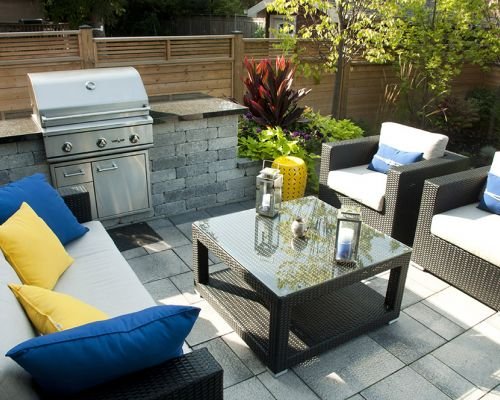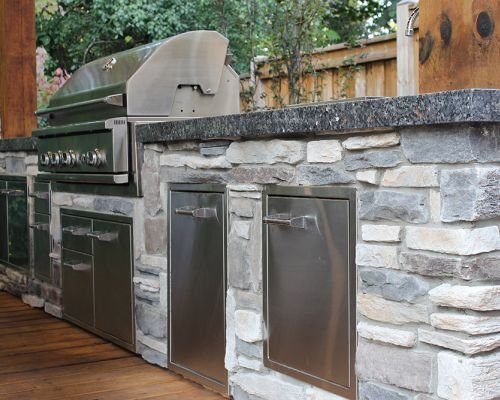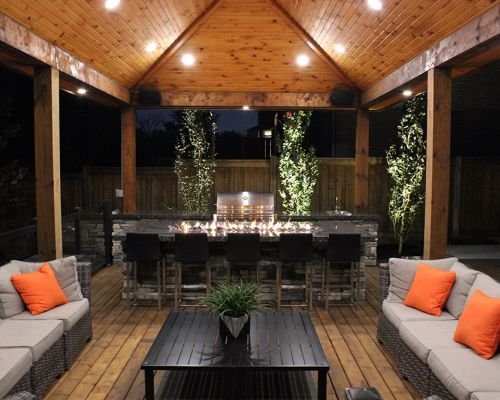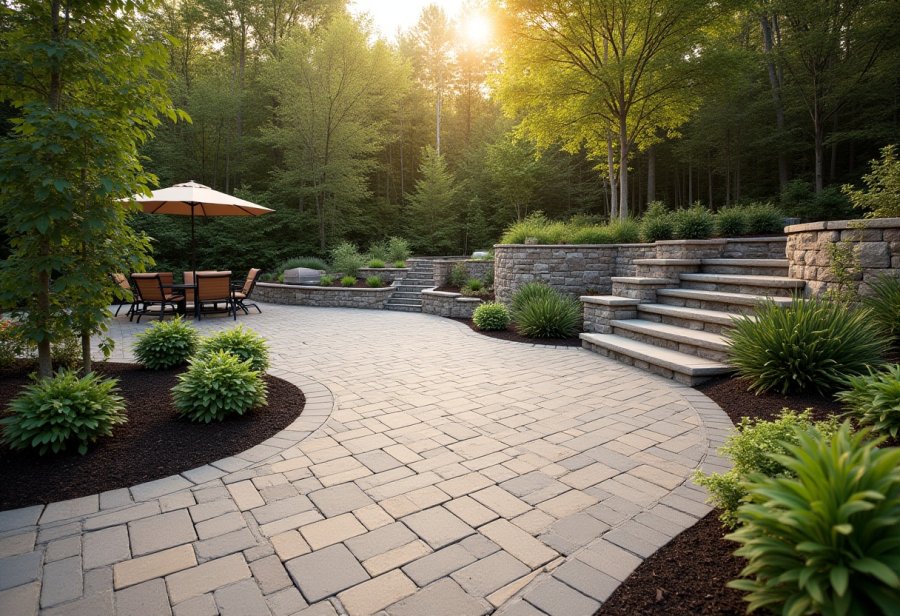Transforming a Toronto yard into an outdoor retreat is about more than aesthetics—it’s a harmonious blend of beauty, sustainability, and resilience. How can homeowners craft tranquil, functional spaces that withstand the city’s seasonal extremes while supporting ecological health? This guide explores the essentials of sustainable landscape design, emphasizing native plants, eco-friendly materials, and innovative water management. Native flora not only thrives with minimal maintenance but also nurtures local biodiversity, creating vibrant, resilient landscapes. Reclaimed wood, natural stone, and smart irrigation systems add character and efficiency, reducing environmental impact and ongoing costs. As Toronto’s climate evolves, future landscapes will incorporate smart technologies and habitat enhancement, fostering communities that are both beautiful and eco-conscious. The question remains: can your outdoor space become a sanctuary that balances visual appeal with environmental responsibility—one that invites relaxation today and endures for generations? The answer lies in thoughtful, sustainable design.
Transform Your Toronto Backyard with Expert Landscape Design
Looking to elevate your outdoor space in Toronto? Toronto Landscape & Design (TLD) offers exceptional services including natural stone installations, water gardens, irrigation systems, and retaining walls. Our award-winning designers take everything into consideration to craft personalized backyard makeovers that suit your style and needs. Whether you want a tranquil water feature or durable retaining walls, our team delivers stunning results that enhance your home’s beauty and functionality. Discover how a backyard makeover by TLD can transform your outdoor environment into a private oasis. Contact us today at 1.416.644.0499 or email mike@torontolandscapedesign.com to start your journey toward a breathtaking landscape.

Transform Your Toronto Yard Into a Tranquil Outdoor Retreat
Transforming a Toronto yard into a personal outdoor retreat is about more than just tidying up the space; it’s about crafting a peaceful oasis amid the city’s busy environment. For many homeowners, their backyard is an extension of their home—a place to unwind, entertain, and reconnect with nature without leaving Toronto’s vibrant streets. As urban living grows denser and more fast-paced, having a backyard retreat offers a vital escape and a boost to daily well-being.
Designing such a space requires understanding Toronto’s unique climate, with its cold winters, humid summers, and seasonal shifts. Selecting the right plants, materials, and features ensures your outdoor retreat remains inviting and functional throughout the year. It’s about creating a space that withstands the weather while providing comfort and beauty—whether that’s a lush garden, a cozy seating nook, or an outdoor kitchen.
Many homeowners see their outdoor space as a chance to enjoy nature’s benefits right outside their door. A well-designed yard can serve as a sanctuary for relaxation, a gathering spot for family and friends, or a productive vegetable garden that adds utility and charm. These personal retreats not only enhance daily life but also increase the value of the home, making them a smart investment.
Achieving this balance involves blending aesthetics with practicality. Native plants, eco-friendly materials, and low-maintenance features foster landscapes that are sustainable and resilient. Incorporating natural elements like stone pathways or reclaimed wood accents creates visual harmony and supports environmental goals. Thoughtful placement of furniture and lighting turns a simple yard into an inviting outdoor living space.
Planning for the seasons is key to a successful outdoor retreat. Long-term resilience depends on choosing native plants and durable materials that thrive year-round. Smart water management systems, such as rain gardens and efficient irrigation, help maintain the space’s beauty while supporting sustainability. With careful design, your backyard can become a lasting sanctuary that evolves with Toronto’s changing seasons.
Creating a backyard retreat that’s both beautiful and environmentally friendly isn’t a challenge when approached with intention. It’s about making smart choices—using native plants, eco-conscious materials, and innovative features—that work together to support your lifestyle and the environment. The result is a space that’s as practical as it is inspiring, offering a peaceful escape that reflects your values.
In the end, transforming your Toronto yard into a personal retreat is a process of thoughtful design and mindful choices. It’s about crafting an outdoor space that offers comfort, beauty, and sustainability—one that can be enjoyed for years to come. With the right approach, your backyard becomes a true extension of your home, a place where you can relax, connect, and thrive in the heart of the city.
Harnessing Toronto’s Environment: Foundations of Landscape Design
Landscape design in Toronto is deeply shaped by the city’s distinct environment. The region’s climate—with its cold, snowy winters and humid, often unpredictable summers—requires careful selection of plants and materials that can withstand these seasonal extremes. Native species play a crucial role here; they are naturally adapted to Toronto’s weather patterns, making them more resilient, requiring less water and fertilizers, and supporting local biodiversity. Using native plants not only ensures a sustainable landscape but also reduces ongoing maintenance and environmental impact.
Design principles in Toronto focus on creating harmony between natural elements and functional spaces. Incorporating natural stone pathways, reclaimed wood accents, and eco-conscious materials helps achieve a balanced aesthetic that feels both organic and intentional. Thoughtful placement of seating areas, walkways, and outdoor amenities enhances usability, turning a simple yard into a cohesive outdoor living environment. Emphasizing visual balance and flow, these choices foster a sense of tranquility and coherence amid the city’s vibrant energy.
Over recent years, Toronto’s landscape design has shifted toward sustainability. Traditional gardens with imported plants are giving way to innovative approaches like rain gardens, green roofs, and water-efficient systems. These features support environmental health by managing stormwater, reducing runoff, and encouraging biodiversity. They also elevate the visual appeal, creating landscapes that are not only beautiful but resilient and eco-friendly, capable of adapting to climate challenges without sacrificing style.
Durability is essential in Toronto’s climate. Hardscape elements such as permeable pavers and natural stone are favored for their ability to withstand harsh winter conditions and humid summers. These materials extend the lifespan of outdoor features and minimize repairs, ensuring your landscape remains vibrant over time. Combining tough, weather-resistant hardscaping with native plants results in a landscape that’s both practical and visually appealing, reducing maintenance while supporting long-term environmental goals.
Designing in Toronto demands a focus on longevity and adaptability. Selecting hardy, native species and durable materials creates a landscape capable of thriving through seasonal shifts. Integrating smart water management solutions like rain gardens and automated irrigation further enhances sustainability. This approach produces outdoor spaces that remain functional and attractive year-round, reflecting a thoughtful balance of resilience, beauty, and ecological responsibility.

Blending Beauty and Sustainability for a Harmonious Outdoor Space
Balancing visual appeal with eco-friendly practices in outdoor design is about making thoughtful choices that enhance beauty while supporting sustainability. Native plants are a cornerstone of this approach—they bring vibrant color, texture, and life to the landscape, all while thriving naturally in Toronto’s climate. Choosing species that are well-adapted reduces the need for excess watering, fertilizers, and pesticides, which benefits the environment and cuts down on maintenance. This harmony between plants and the local environment creates a lush, resilient landscape that feels both intentional and alive.
Reclaimed wood and recycled materials add character and sustainability to outdoor spaces. These elements lend a natural, organic feel that complements native plantings and enhances visual interest. Durable and weather-resistant, reclaimed materials such as weathered wood or natural stone not only reduce waste but also provide a stylish, timeless aesthetic. When integrated thoughtfully, they create a cohesive look that feels both eco-conscious and inviting, elevating the overall design without sacrificing function.
Lighting plays a crucial role in shaping the atmosphere after sunset. Solar-powered fixtures and LED lights offer warmth and ambiance while consuming minimal energy. Properly placed, these lights highlight focal points like water features or seating areas, making the space inviting and functional into the evening hours. Eco-friendly lighting solutions are easy to install and maintain, allowing homeowners to enjoy their outdoor retreat long after the sun sets, all while aligning with sustainability goals.
Features such as rain gardens and smart irrigation systems further reinforce eco-friendly design. Rain gardens, filled with native plants, naturally absorb excess water, helping to prevent erosion and manage stormwater runoff. Paired with automated watering systems that deliver water precisely where needed, these features conserve resources and promote healthy, lush landscapes. They demonstrate that beauty and sustainability can coexist, each enhancing the other in a balanced outdoor retreat.
Thoughtful placement of pathways, seating, and storage ensures the space remains practical and clutter-free. Durable materials like permeable pavers or natural stone withstand Toronto’s weather, minimizing repairs and replacements. Combining these hardscape elements with native plants and water management solutions results in a landscape that’s not only beautiful but also resilient and easy to care for. When aesthetics and eco-consciousness work together seamlessly, your outdoor retreat becomes a sustainable haven that lasts for years to come.
To further enhance the sustainability of your outdoor space, consider exploring resources on sustainable landscaping practices. For example, you can learn more about how to implement eco-friendly design strategies by visiting sustainable landscaping practices. Incorporating these principles can help ensure your garden remains beautiful and environmentally responsible for years to come.
Practical Strategies for Eco-Friendly Landscape Success
Creating sustainable outdoor retreats in Toronto starts with practical, proven strategies that blend functionality with eco-consciousness. Native plants are a cornerstone—they’re already adapted to Toronto’s climate, thrive with minimal watering, and require fewer chemical inputs. Using these species not only reduces ongoing maintenance but also supports local biodiversity, making your landscape more resilient over time. Incorporating native flora ensures your yard remains vibrant through seasonal shifts, all while aligning with environmentally friendly practices.
Reclaimed and recycled materials further boost the sustainability of your outdoor space. Weathered wood, natural stone, and other locally sourced elements add character and durability, standing up to Toronto’s harsh winters and humid summers. These materials help reduce waste and minimize the carbon footprint of your project, while adding a rustic, timeless appeal. When thoughtfully integrated with native plantings, they create a cohesive, natural look that feels both inviting and eco-friendly.
Stormwater management is another essential aspect. Installing permeable pavers and natural stone pathways allows rainwater to seep into the ground, reducing runoff and erosion. Pairing these with rain gardens filled with native plants provides an effective way to absorb excess water, preventing flooding and supporting groundwater recharge. These features not only serve functional purposes but also enhance the overall aesthetic, creating a seamless connection between landscape and environment.
Smart irrigation systems and rainwater harvesting techniques further promote water conservation. Automated drip irrigation delivers water directly to plant roots, minimizing waste while keeping your landscape lush. Rain barrels and underground tanks collect runoff, reducing reliance on municipal water sources. These systems work together to maintain a healthy, thriving landscape while respecting Toronto’s seasonal variability and water resources.
Designing with durability in mind ensures your landscape remains beautiful and functional year after year. Hardscape elements like permeable pavers and natural stone are resistant to Toronto’s climate extremes, reducing the need for repairs. Combining these robust materials with native plants and water management features results in a landscape that’s not only sustainable but also easy to care for. This practical approach keeps your outdoor retreat resilient, inviting, and aligned with long-term environmental goals.

Looking Ahead: The Future of Sustainable Outdoor Retreats in Toronto
As Toronto continues to embrace sustainable outdoor living, the landscape design future looks brighter and more innovative. Advances in smart irrigation, biodegradable materials, and native plant cultivation will make maintaining beautiful, resilient outdoor retreats easier and more eco-friendly. Homeowners are increasingly conscious of their ecological footprint, driving demand for designs that prioritize biodiversity, water conservation, and energy efficiency. Incorporating solar-powered lighting and automated watering systems will become standard features, seamlessly blending functionality with sustainability.
Resilience and adaptability will remain at the heart of landscape planning. Selecting native, climate-resilient plants and weather-resistant materials ensures outdoor spaces can withstand Toronto’s seasonal shifts with minimal intervention. Enhanced stormwater management features like rain gardens and permeable pavements will play a vital role in mitigating runoff and supporting groundwater recharge, especially as weather patterns grow more unpredictable. These innovations will help outdoor retreats stay vibrant and usable year-round, reducing ongoing maintenance and environmental impact.
The integration of beauty and eco-consciousness will deepen, with outdoor kitchens, seating areas, and entertainment zones designed to be energy-efficient and environmentally friendly. These spaces will foster closer connections to nature, encouraging residents to spend more time outdoors while respecting the planet. Community-driven projects and shared green infrastructure will amplify these efforts, creating healthier neighborhoods and urban ecosystems that thrive on collective sustainability.
Biodiversity will take center stage, with landscapes designed to support local wildlife and native plants. Creating natural habitats, pollinator gardens, and bird-friendly features will turn private yards into vital ecological corridors within the city. This not only enhances aesthetic appeal but also promotes ecological health, offering residents a richer, more immersive outdoor experience. As awareness grows, more homeowners and designers will prioritize environments that nurture both human enjoyment and the natural world.
Staying ahead in this evolving landscape demands continuous learning and experimentation. Attending industry workshops, exploring innovative materials, and embracing emerging technologies will inspire new ideas and better practices. The future of outdoor retreats in Toronto isn’t just about aesthetics; it’s about creating spaces that are resilient, eco-friendly, and truly reflective of a community’s commitment to sustainability. Every backyard can become a sanctuary—an inspiring testament to responsible design that benefits both people and the planet for years to come.






